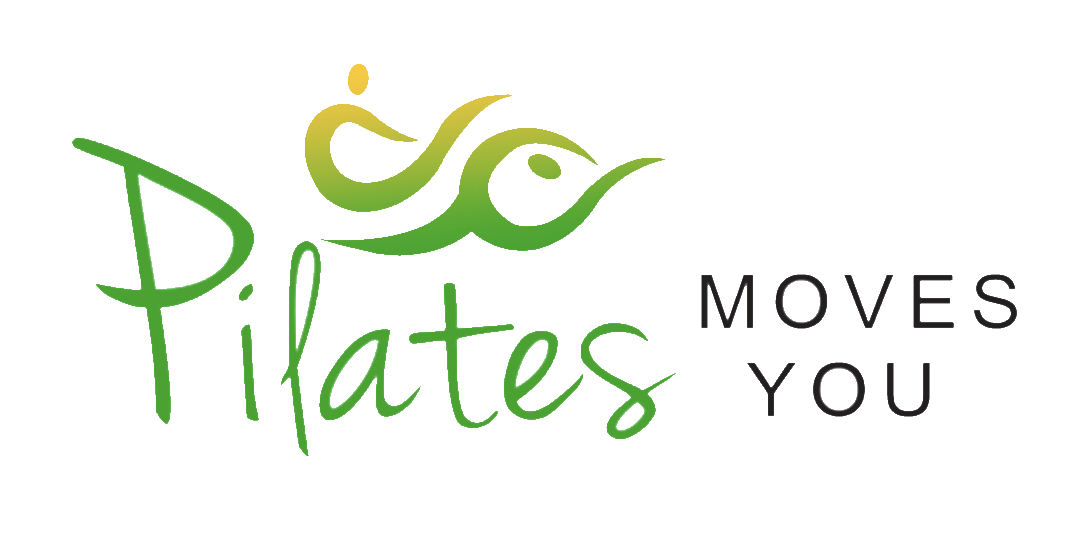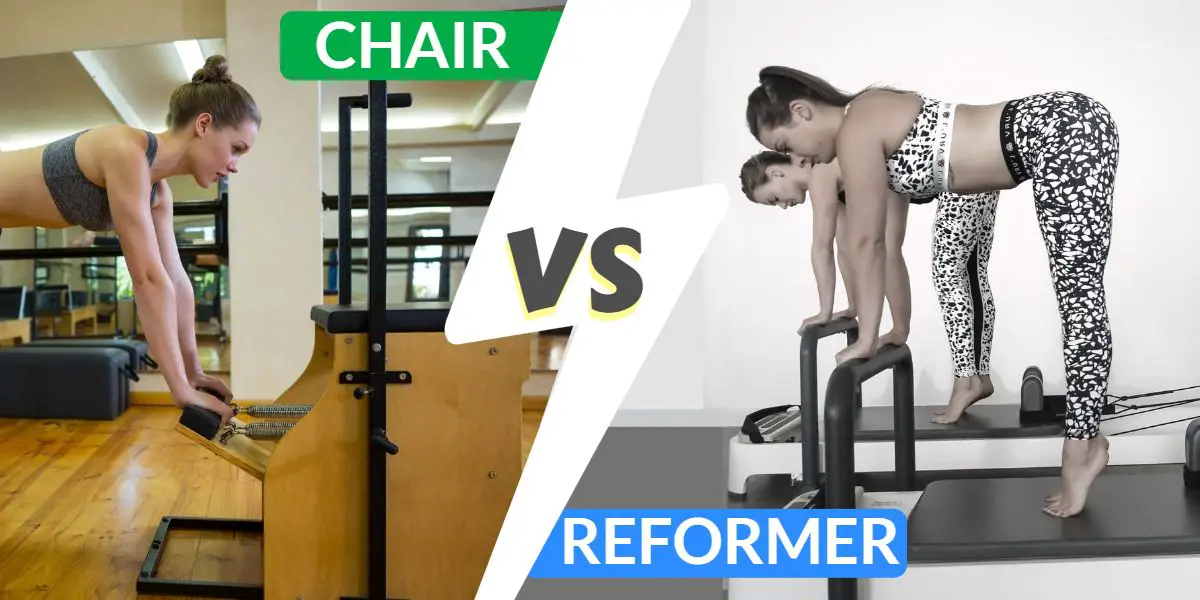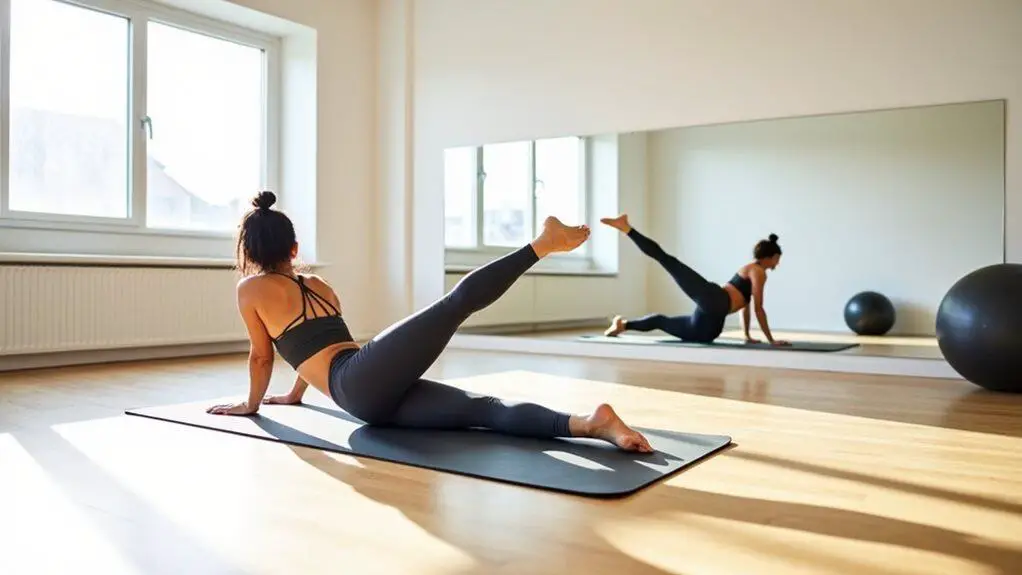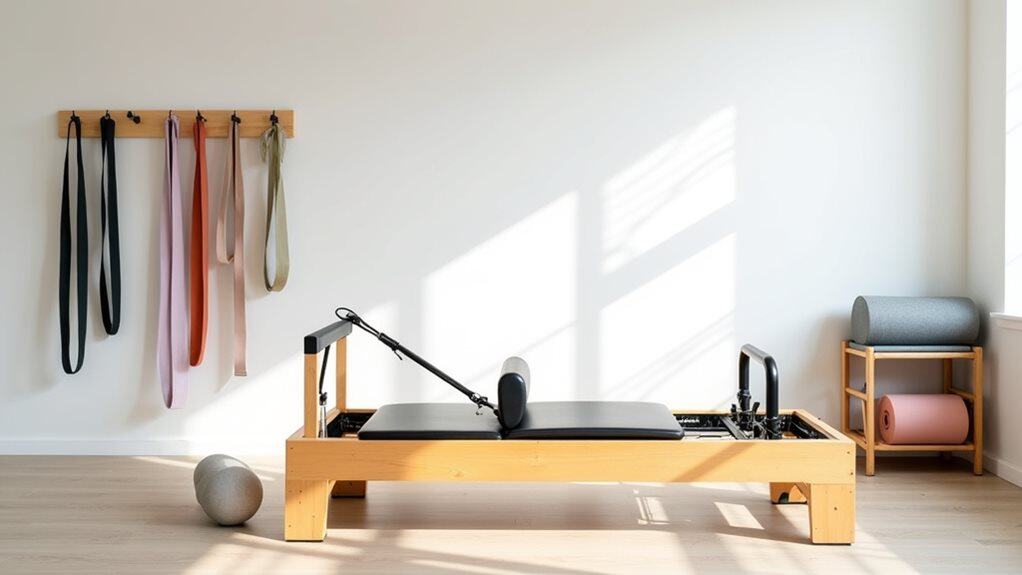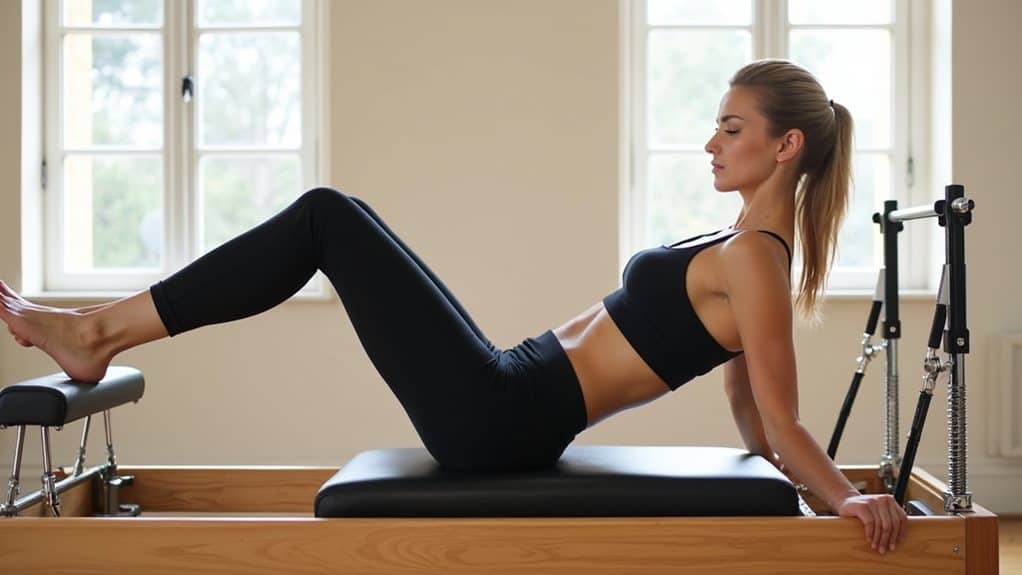Are you setting up an at-home workout space, or maybe you can’t decide what equipment to use when you get to the local studio? Either way, you’ll want to know the differences between the Pilates chair and reformer.
The Pilates chair is a small wooden box with a pedal attached to springs to create resistance. Conversely, the Pilates reformer is shaped more like a bed, with a sliding seat and a system of pulleys. Both pieces of equipment are capable of a range of exercises, but the chair is more compact.
You’ve come to the right place if you want to dig deeper into the differences between the Pilates chair and reformer.
| Chair | Reformer | |
| Price Range | US$1000 – US$2000 (£800 – £1700) | US$2000 – $4000 (£1600 – £3000) |
| Approximate Size | L80cm x W65cm x H143cm | L 234cm x W 75cm x H 33cm |
| Approximate Weight | 55kg | 100kg |
Keep in mind there are lots of different brands and models, these figures are just to give you an approximate idea of the key differences.
Keep reading to dive into the pros and cons of both pieces of equipment.
What is a Pilates Chair?
A Pilates Chair, also known as a Wunda Chair, is a special type of exercise equipment that helps strengthen your core muscles and helps improve your posture and balance.
Although the name implies it might look like something you would sit on at a table, the design is that of a box with detachable bars and a spring plate.
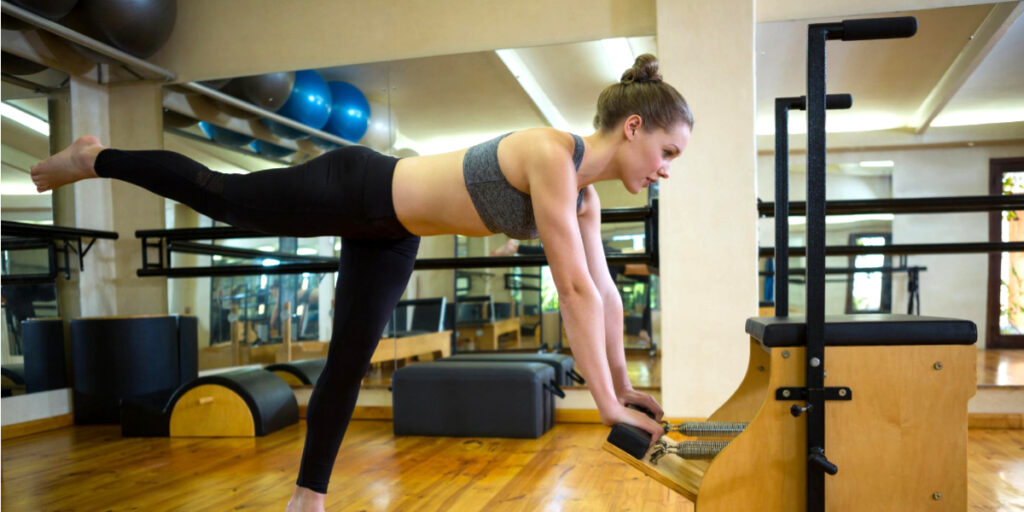
In use, the Wunda Chair allows you to test and improve your core strength using more challenging and advanced exercises than mat Pilates.
Pilates Chair Pros and Cons
Whenever I decide on two pieces of equipment, the first thing I do is a pros and cons list, to make sure I’m getting good value for my investment. I know that it can be tedious to develop comprehensive pros and cons lists, so I’ve done the work for you!
Pilates Chair Pros
- Smaller footprint. The chair has a smaller footprint than the reformer. Since the chair is smaller, it is easier for storage, and you don’t need as much space when you use it.
- Invented by Joseph Pilates. The chair was invented by the creator of Pilates, Joseph Pilates. Therefore, you can be sure the Pilates chair can perform Pilates the way it was intended.
- Happy middle ground. The chair is a happy middle ground between a mat and a reformer. You’ll have the luxury of additional resistance with the chair that you don’t get with a mat. And you won’t have to find a large amount of cash and space that you would with reformer.
Pilates Chair Cons
- Not beginner-friendly. Unfortunately, it is not a beginner-friendly piece of workout equipment. You should learn the fundamentals on the mat first before attempting to use a chair or reformer.
- Not as versatile as a reformer. While the chair opens up your exercise options, the reformer will be more effective at widening your pool of available exercises.
- Expensive. While the chair is less expensive than a reformer, the chair is still an expensive piece of equipment. Even budget chairs are expensive compared to other items you can use, such as resistance bands and hand weights.
As a Pilates instructor, it makes a lot of sense for me to invest in this piece of Pilates equipment, but I must admit it was one of the last bits of kit I purchased. Instead, I opted for a reformer first.
However, that is more due to the nature of my work, if I were not an instructor I likely would’ve gone for the chair first due to the smaller cost and footprint.
What is a Pilates Reformer?
A reformer is a piece of equipment used by many fitness enthusiasts to help them achieve their goals. They are also known as “pilates machines” and they’re bed shape and sized with a moveable carrage and springs that add resistance.
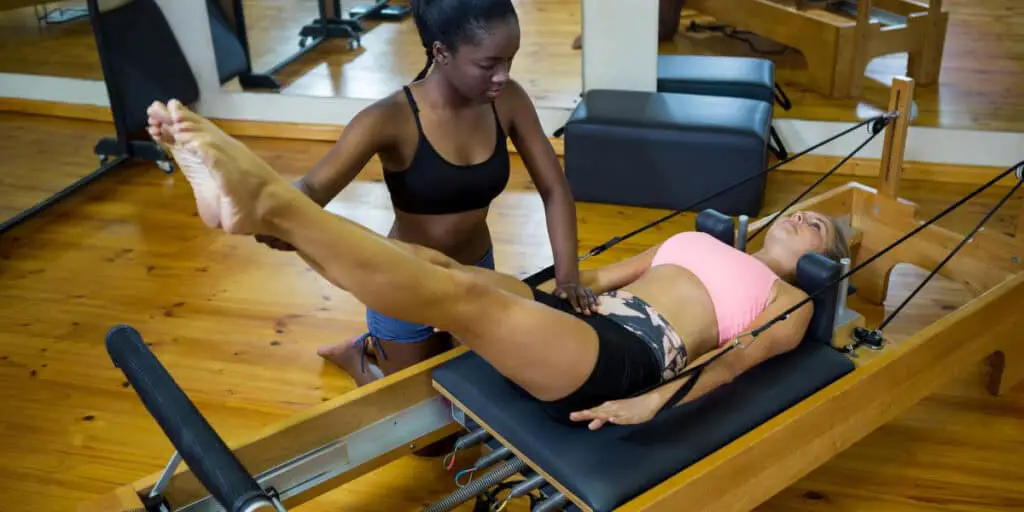
For more information see: The Ultimate Guide to the Pilates Reformer
Pilates Reformer Pros and Cons
While the chair has some compelling pros and cons, we still need to check out what the reformer offers.
Pilates Reformer Pros
- Invented by Joseph Pilates. Like the chair, the reformer also has a rich history dating back to Joseph Pilates. The reformer was first found in the first Pilates studio in New York City, back in the 1920s.
- The versatility of exercises. The reformer can perform almost any Pilates exercise you can do on a mat. Additionally, there are even exercises you can do on a reformer that cannot be done on a mat.
- More resistance from springs and pulleys. If you’ve done Pilates on a mat for an extended period, you’ll understand that bodyweight exercises gradually become easier. With the reformer, you can add resistance to your exercises to continuously challenge yourself.
- Modified exercises for injuries. If you’ve suffered an injury, there are certain modifications that the reformer allows that will get you back to practicing Pilates.
Pilates Reformer Cons
- Large footprint. The reformer is a large piece of equipment. For context, think about the size of a single bed. You’ll need a decent-sized space to store and use your reformer compared to the chair.
- Tough on beginners. I recommend staying away from the reformer if you’re just starting your journey. The reformer requires excellent form, which is easier once you have mastered bodyweight exercises.
- Expensive. Reformers are at the top tier of cost for Pilates equipment. When you consider most Pilates exercises are compatible with just a mat, it can be tough to justify the price of a reformer. Plus, you should also invest in tuition from a trained instructor who can show you how to use it correctly.
I’m fortunate that I make a living from teaching Pilates, so in the long run the reformer pays for itself. As a large, and expensive, piece of exercise equipment you need to be 100% sure it’s the right investment for you. For more information about the reformer see: REFORMER
Exercise Routines You Can Do With a Pilates Chair
I mentioned versatility for the pros of the chair, so I’m sure you’re wondering what exercises it is capable of. Thankfully, I’ve found a fantastic full-body workout for you to try today!
Beginner Pilates Chair Routine
I’m the type of person to stray towards the shorter timed workout routines, so I love this beginner chair routine! The routine I’m sharing with you is under 20 minutes, and you still manage to get a full-body workout that will leave your muscles sore the next day.
This beginner workout is from the YouTube channel Function Pilates, a great resource for workouts. If you like this routine and want more, I’d recommend checking out their channel.
Having recently purchased my own Wunda Chair I will be publishing tutorial videos on my YouTube channel soon, so don’t forget to subscribe for notifications: Pilates with Donna Finnie.
Intermediate/Advanced Pilates Chair Routine
The last of our chair routines walks a line between intermediate and advanced. I hope this will be the challenge needed for intermediate students to take the next step into the world of advanced routines.
Hopefully, you have found one at your preferred difficulty level among these two workout routines!
Exercise Routines You Can Do With a Pilates Reformer
I absolutely love my reformer. It has helped take my body weight workouts to the next level by offering a range of resistance to push my muscles further than ever. It’s also a very versatile bit of kit, and there are a range of exercises from beginner to advanced you can perform on a reformer.
Beginner Pilates Reformer Routine
When you’re starting out the added resistance from the reformer can do a number on your muscles. The additional muscle tension is why I like to start with a shorter routine like this one by Nell Hoess.
This workout routine is quick and to the point, with a descriptive voice-over to help you with proper form. Additionally, the whole routine will only take about 20 minutes!
Intermediate Pilates Reformer Routine
You would be lucky if you liked our host from the beginner reformer routine! Nell Hoess has a series of reformer exercise routines on her channel, including this intermediate reformer routine.
Nell Hoess’ intermediate routine is a little longer at 30 minutes but is still a nice digestible exercise routine length.
Advanced Pilates Reformer Routine
The final routine I’ll recommend for you is not for the faint of heart. This 50-minute full-body routine will leave your muscles aching the next day.
Homebody Pilates knocked it out of the park with this advanced routine, and they have a couple more on their YouTube channel if you’re looking for even more advanced reformer routines.
Which Is Better for a Home Pilates Studio? Chair vs. Reformer
A Pilates chair is better than a Pilates reformer for a home Pilates studio. The Pilates chair has a smaller footprint and lower price than the Pilates reformer. The smaller footprint makes the Pilates chair easier to store, and you don’t need as large of a workout space to use the chair.
As much as I love my reformer, it’s hard to recommend it to the average person for a home studio over the chair. Both provide you with challenging exercises and will help increase the levels of resistance you work with compared to a traditional mat workout, but the Wunda chair does so for a lower price.
Final Thoughts
Overall the reformer is the better piece of Pilates workout equipment. However, price and size can make using a Pilates reformer at home a bit restrictive.
If you’re looking for an at-home workout machine, the Pilates chair is your best bet.
Of course, there is nothing stopping you from taking advantage of both. Have a chair at home and visit a studio that has reformers to make use of them in a supervised lesson for additional exercises.
